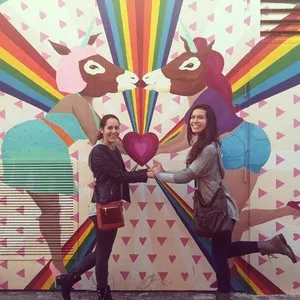Beer is a classic part of the college experience. Whether it comes out of a keg or can, it’s synonymous with tailgating and frat parties. But most college students do not know much about how beer is made.
University of Oklahoma chemical engineer Eric has a how-to home brew recipe he makes in the comfort of his apartment. Home-brewing yields cheaper and tastier alternatives to a bar’s watered-down draft. Below is a basic recipe that, much like a chocolate chip cookie recipe, you can add variants to (like cook times and ingredients) to yield unique flavors. We also added some of Eric’s tips and tricks throughout so you can brew like a pro.
#SpoonTip: Clear beers use rice extract (Bud Light) while amber craft beers use barley extract.

Barley Pilsner Beer
Ingredients
Instructions
Make sure to sanitize all pots, spoons, and bottles before you begin. If bacteria invades your brew, it will ruin yeast fermentation, resulting in a bad batch or sour beer. Bring 1.25 gallons of water to a boil in a large pot. This will take 35-45 minutes.
#SpoonTip: 1.25 gallons of water = 1 gallon of beer
Add entire sugar packet into boiling water. A mixture of sugar, water and yeast makes beer. In this flavor kit, the sugar is extracted from malted barley, which will yield an earthy beer.
#SpoonTip: Quickly pour malt into water.
Add 7 grams of u0022hopsu0022 or hoptimus rex packets at the beginning of the boil. These are preservatives so your beer can last a long time. Let u0022wortu0022 mixture (sugar, water, hops) boil for 45 minutes.
#SpoonTip: Adding different amounts of hops at differents times while your water is boiling creates various flavors. There are also various hop flavors.
After 25 minutes during the 45-minute boil, add an additional 7 grams of hops. Continue to boil for remaining 20 minutes.
#SpoonTip: More hops yields a bitter beer (think IPA), while fewer hops and more sugar yields a dry beer (think Bud Light).
Turn burner off and add 2 oz. honey from the kit. Then, let u0022wortu0022 mixture cool to room temperature. Make sure it cools completely because warm water will kill yeast, ruining fermentation. Remove from pot and pour mixture into fermenting vessel using only sanitized objects.
#SpoonTip: Only fill the vessel to the 1-gallon mark because yeast will cause foam formation on top of your brew. Then, gently rock mixture to slosh the wort and mix some air into yeast cells. Air + yeast = healthy fermentation. Then, add only half the kit’s yeast packet into the vessel and seal tightly.
Store in a dark place for 2-3 weeks and let the yeast do its work. This is primary fermentation.
#SpoonTip: Taste your brew! You will know it’s ready when you taste it. The brew will only get better with time. More time results in stronger aromas and more consistent flavoring throughout the batch. Bottle your brew using a bottle that can cap or seal well. A tight seal allows your sugar to mix with the yeast and make carbonation (the little bubbles in your drink). Store bottles at room temperature. Once you’re ready to drink, refrigerate or ice them. Also, try to avoid icing or cooling for too long because the yeast is continually carbonating and refrigerating kills the yeast.
If you want to splurge … buy a hydrometer at your local brewery. The hydrometer estimates alcohol content. The highest content Eric has created was 7.3% for beer and 22% for wine.
There are many steps you can add or change in this how-to home brew to make your beer unique. But, there is one golden rule necessary for all brews: Share your creation with family and friends. You can get feedback on your creation or just have a reason to gather some people on the porch to sip a cold one.
Eric hopes to begin kegging and is looking to modify his old dorm mini fridge so he can serve his beer on tap. One of the great things about homebrewing is you can make it as simple or complex as you want. But no matter how you choose to go about it, you will always end up with something totally unique that can get you buzzed.
Stay thirsty, my friends.











